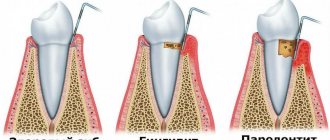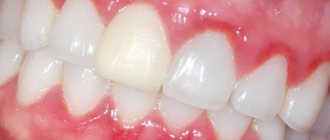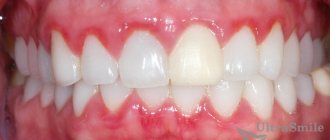Many centuries ago, our ancestors understood a simple truth - nature itself takes best care of human health. After all, for any disease there is sure to be a medicinal plant that will help improve the condition. Thanks to the experience of traditional healers, today we know many effective and safe recipes for all occasions. And the benefits from these natural remedies are often much greater than from expensive medications.
For example, oak bark, which has many beneficial qualities, is widely used in folk medicine. Based on this component, various recipes have been compiled that help stop uterine bleeding, cope with excessive sweating, and prevent bedsores. Oak bark is very useful in treating teeth and oral cavity. It is recommended for gingivitis, stomatitis, gumboil, and bad breath.
About the benefits of oak bark
It is difficult to list all the beneficial properties of oak bark. It contains various acids, proteins, pectin, resins that have an astringent effect, and tannins.
A natural antiseptic, oak bark is often used in medicine, including dentistry.
Thanks to this combination of natural components, the bark can be used for many diseases. It has anthelmintic and antibacterial properties, is a natural antiseptic, promotes wound healing, and accelerates the restoration of skin tissue.
One of the beneficial properties of oak bark is the ability to stimulate natural defenses and strengthen the immune system.
Help with gum disease
Inflamed gums cause a lot of trouble. She turns red and then starts to hurt a lot. Under the influence of pathogenic organisms, pustules appear in the mouth. If measures are not taken in time, you can even lose a tooth (in case of periodontal disease). To strengthen the gums and relieve tooth inflammation, it is recommended to use a decoction prepared from oak bark. You should rinse your mouth with this product throughout the day.
Decoction for rinsing
The decoction is prepared according to the following recipe:
Take 2 cups of water for 2 teaspoons of oak bark. Pour water over the bark and bring to a boil over high heat. Then reduce the heat and simmer the mixture for 5 minutes. Then remove the product from the heat and allow it to cool. The cooled mixture is carefully filtered and poured into a jar. The healing decoction is ready, you can begin treatment.
The oral cavity should be rinsed frequently - up to 5 times a day. It is quite possible that the condition will improve on the first day. But this does not mean that treatment can be stopped. The full course must last at least 3 days.
If the inflammation is too severe, then the procedures are carried out for a whole week. It is better not to use yesterday's decoction, because its healing properties weaken over time. Rinsing will bring maximum benefit if you brew a new portion every day.
Why is periodontitis dangerous?
Periodontal tissues include not only the gums, but also the surface layer of the tooth root, the ligamentous apparatus, and the bone walls of the socket. All these tissues perform support-retaining, shock-absorbing, trophic, nutritional, and barrier functions. Inflammation of periodontal tissues provokes disruption of the intergingival junction, which causes loosening and tooth loss.
If not treated in a timely manner, periodontitis can lead to intoxication of the body, and, consequently, diseases of the cardiovascular system, infection of bone tissue, and the development of osteomyelitis.
Flux treatment
The pain from dental problems can be so severe that it is simply impossible to bear. And if gumboil has formed near the tooth, then unbearable pain is complemented by an increase in body temperature and a sharp deterioration in general well-being.
A decoction of oak bark with sage will help reduce pain from flux
A simple folk recipe - oak bark with sage leaves - will help you alleviate the condition at home. A medicinal decoction is prepared in this way. Take 4 tablespoons of crushed bark and pour a liter of boiling water over it. Then the composition is kept in a steam bath for 20 minutes. About 5 minutes before the end of cooking, add a little sage (half a teaspoon) to the bark. After cooking, the composition should sit for half an hour. The finished broth must be cooled and rinsed with it in your mouth for several minutes every hour. As a result of such procedures, the flux subsides. Repeat rinsing until symptoms disappear completely.
Main manifestations and symptoms
It is not difficult to recognize gum inflammation. The following symptoms may appear:
- redness, swelling of the gums;
- increased sensitivity of soft tissues;
- bleeding associated with weakening of small blood vessels;
- characteristic loose surface of the gums;
- bad breath.
There are also specific manifestations: with advanced periodontitis, purulent discharge appears, and body temperature may rise. With ulcerative gingivitis, ulcerations are noticeable on the surface of the soft tissue. Atrophic gingivitis can lead to exposed tooth necks and increased sensitivity to cold and hot foods.
Oak bark for stomatitis
Another common oral disease is stomatitis. Children are especially often affected by this disease. After all, they always put either a dirty toy or unwashed hands into their mouths. And even the most vigilant parents do not always manage to keep an eye on their baby. As a result, an infection develops in the oral cavity, incredibly painful purulent ulcers appear, and the temperature rises. Because of this, the child suffers greatly, and the parents cannot find relief from their worries. It's actually very easy to help your baby. You just need to prepare a decoction of medicinal plants. First, brew a couple of teaspoons of bark, and then add a spoonful of calendula or chamomile to the decoction. The composition is poured with boiling water (3 cups) and kept in a water bath for 5 minutes. The finished broth is allowed to cool and then filtered thoroughly. Now you can move on to the procedures.
When a child has stomatitis, each wound is treated with a decoction of oak bark
If your child is very small and cannot rinse his mouth, you should not refuse natural medicine. You can treat each wound separately with the decoction. If you are patient and do this regularly, after just a few procedures your baby will feel much better.
Oak bark is truly the most suitable way to help young children get rid of stomatitis. After all, there are no special means for them. All medications sold in pharmacies are intended for children over 7 years of age.
consumer reviews
Optimist123 (otzovik.com)
Mouthwash Vertex "Asepta" - An excellent product for oral hygiene
Asepta fresh is what you need for daily use. There is no strong taste, but a very mild minty taste. No alcohol, so no burning sensation in the mouth. No need to breed
ADVANTAGES:
what you need for every day and at a good price
FLAWS:
for me there are no cons
Sources:
- Article “Treatment and hygiene features for mild and moderate periodontitis” by S.B. Ulitovsky head Department of PFS, Professor, Doctor of Medical Sciences, A.A. Leontyev Associate Professor of the Department of PFS, Ph.D. PSPbSMU named after. I.P. Pavlova
- Evaluation of the effectiveness of treatment of chronic generalized periodontitis of mild and moderate severity using Asepta antibacterial agents (S.I. Gazhva, A.I. Voronina) S.I. Gazhva, Doctor of Medical Sciences, Prof., Head of Department A.I. Voronina, aspirant, dentist, Department of Dentistry, Faculty of Dentistry, State Educational Institution of Higher Professional Education "Nizhny Novgorod State Medical Academy"
- Article “Comparative assessment of the effectiveness of treatment of chronic generalized periodontitis of mild and moderate severity using Asepta antibacterial agents” (Parodontology, No. 3, 2009)
- Study of the clinical effectiveness of treatment and prophylactic agents of the Asepta line in the treatment of inflammatory periodontal diseases (A.I. Grudyanov, I.Yu. Aleksandrovskaya, V.Yu. Korzunina) A.I. GRUDYANOV, Doctor of Medical Sciences, Prof., Head of Department I.Yu. ALEXANDROVSKAYA, Ph.D. V.Yu. KORZUNINA, asp. Department of Periodontology, Central Research Institute of Dentistry and Maxillofacial Surgery, Rosmedtekhnologii, Moscow
Diseases that can be treated with oak bark
The bark has a good effect not only in the treatment of dental diseases. Traditional healers recommend its use for other health problems. Thus, a decoction of the bark can successfully treat uterine bleeding, erosion and other female diseases. To do this, prepare a medicinal decoction in special proportions and perform douching. When bleeding occurs, the decoction is taken orally.
Many people are plagued by an annoying nuisance - excessive sweating of the feet. Oak bark will help in this case too. Regular baths with its decoction will quickly correct the situation.
The bark is also successfully used for hair care. If your curls have become brittle and lifeless, after each wash you need to rinse them with a healing decoction. The bark will make your hair strong, healthy and shiny. They will stop falling out and gain volume. If you are blonde, then oak bark will give your hair an expressive shade.
Causes of periodontitis
Factors that provoke the disease include:
- unprofessional, illiterate dental treatment;
- illiterate prosthetics (wide crowns);
- mechanical gum injuries;
- inattentive oral care;
- disturbance of the rate of metabolic processes in the periodontium;
- malocclusion;
- reduced load on the dentogingival apparatus due to eating predominantly soft foods.
Self-harvesting bark
Today you can purchase oak bark very easily. It is inexpensive, available in all pharmacies, and is sold without a prescription or other restrictions. But if you decide to prepare medicinal raw materials yourself, it is better to do it in early spring. At the same time, remember an important rule - young bark is needed for medicinal purposes. The fact is that trees that have not yet reached twenty years of age accumulate the most useful substances.
The collected bark should be placed on a sheet of plywood or fabric made from natural materials and left to dry. For drying, you need to choose a suitable place with good air circulation, for example, in the attic or under a shed. Remember to stir the bark every day. When the raw material becomes almost dry, it needs to be kept in the oven.
Dried raw materials can be used in various recipes. Infusions and decoctions are prepared from it, used alone or mixed with other medicinal plants.
Safety regulations
Oak bark is a natural remedy that acts gently without causing harm to health. But some people need to use it with caution. First of all, we are talking about pregnant women and small children.
To avoid unpleasant side effects, you need to consider the following points:
- With long courses of rinsing (more than two weeks), nausea may occur. So take breaks
- If you have an individual intolerance to the substances contained in the bark, you will have to avoid this remedy.
- If you have constipation, you should not take the decoction orally.
Before starting dental treatment, it is advisable to consult a dentist. The specialist will examine the condition of the oral cavity and give his recommendations on the use of folk remedies. He will tell you how to properly prepare decoctions and what other components should be added to them.
Rinsing your teeth with a decoction of oak bark is useful as a preventive measure.
Oak bark for toothache gives quick and lasting results. At the same time, it does not damage the enamel, improves the condition of the gums, relieves bleeding and even has a slight whitening effect. Do not neglect this remedy, even if your teeth are in good condition. Use a decoction of the bark for preventative purposes, and your smile will always remain beautiful!
Types of diseases
Dentists, first of all, classify periodontitis according to the prevalence of the inflammatory process:
- generalized inflammation spreads to the entire periodontium of the jaw;
- localized - in the area of one or two teeth.
According to the duration of the process, acute and chronic periodontitis is distinguished.










